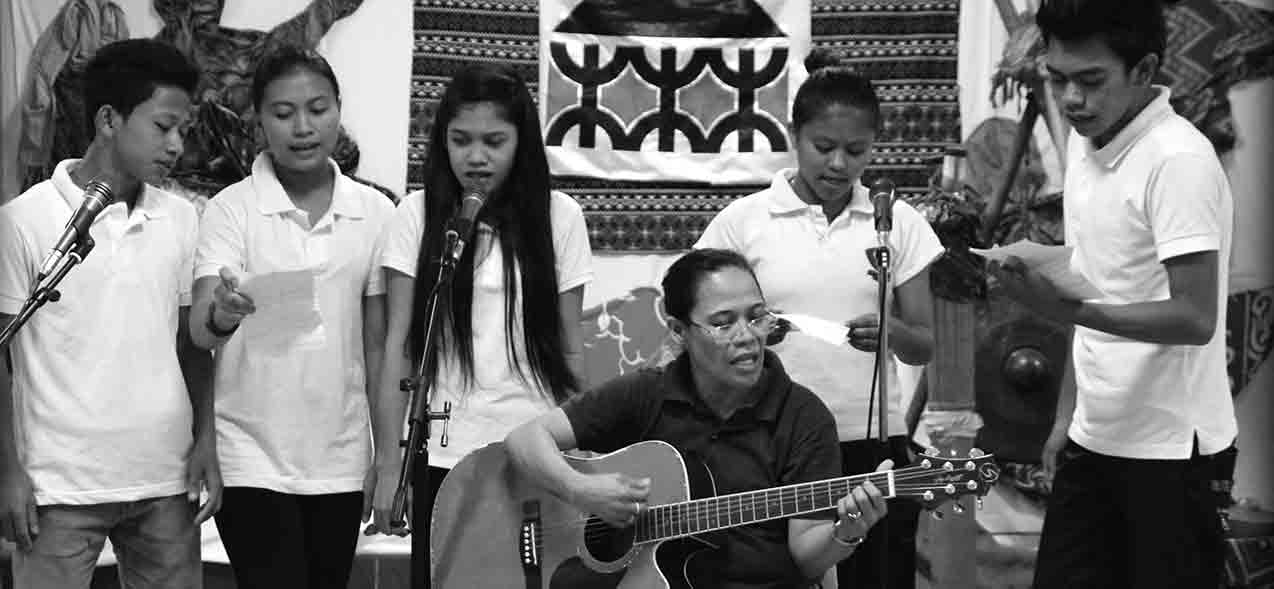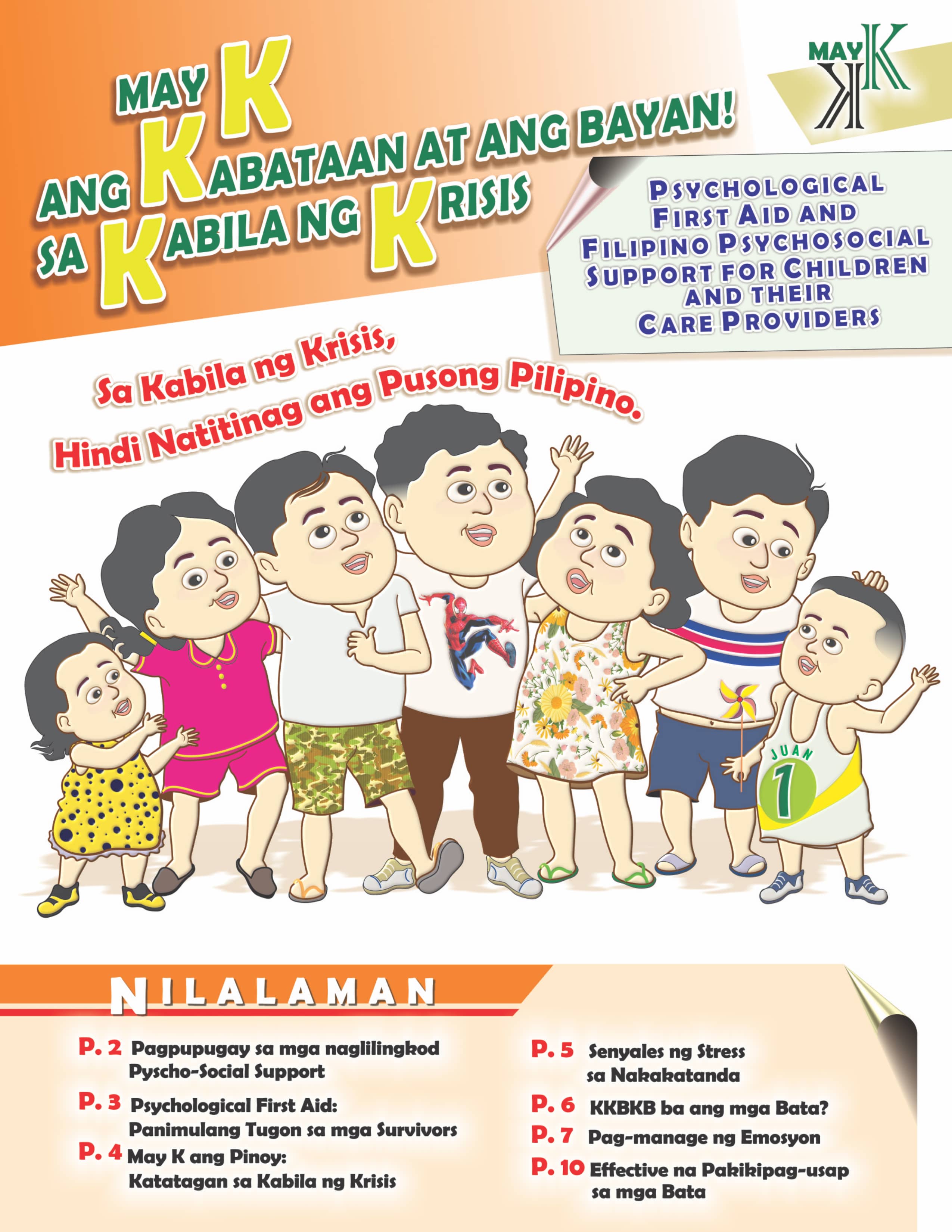- Details
- Category: News
The Department of Education (DepEd) has awarded Balay a certificate of recognition for its psychosocial response and risk reduction activities for school children who have survived the destruction brought about by Typhoon Pablo ('Bopha") last December 2012. In a ceremony held at the Bulwagan ng Karunungan (Hall of Knowledge) of the Department on July 19, 2013, Education Secretary Armin Luistro expressed appreciation to Balay and to their other partners for "helping communities rebuild schools and equip children" so they can resume their normal lives and reduce their vulnerabilities from disastrous events in the future.
Balay mounted its disaster response project in the typhoon-ravaged areas in Monkayo in Compostla Valley and in Trento, Agusan del Sur at the start of the year in collaboration with the Education Cluster, headed by the DepEd, and Unicef with the assistance from AusAid and the Japanese Government. The Canada Fund for Local Initiatives (CFLI) also provided support. It entails, among others, the construction of 18 temporary school houses to serve as 'safe space for learning of around 1,000 learners, the provision of psychosocial support for distressed children and adults, the training of teachers and Barangay Councils on disaster risk reduction (DRR), and the integration of DRR and concepts and preparedness practices into the regular lesson plans of teachers.
Over the last six months, Balay's disaster response team has provided psychosocial support to more than 6,500 children in ten disaster-stricken communities and seventeen schools in its project sites. Of this number, 51% are boys and 49% are girls. Adults who benefitted from the activities count to more than 1,130, some of whom are connected with the Barangay Council as community health and nutrition workers, disaster response volunteers, and members of the Parents-Teachers Association. Some of those adult partners later on participated in the construction of safe learning spaces (SLS) and volunteered to repair the damaged portions of the schools and clear waterways that were blocked by debris. Others lend a hand in preparing for the food for the feeding program of the schools and the social welfare department.
A total of 117 teachers from Trento and Monkayo also participated in an inter-active sharing-and-learning activity about Education-in-Emergency and DRR organized by Balay. The participants learned about basic concepts on disaster, including ideas about hazards, capacities and vulnerabilities. Fundamental concepts and framework on Education in Emergency were introduced. The resource persons also discussed the psychosocial impact of disaster on children and adults and workshops on basic counseling skills, hazard mapping, preparedness planning were done. The outputs of the workshops were a school-community hazard map and a risk-sensitive inputs to the school improvement plans of the partners schools.
Upon their return to their respective communities, the teachers initiated a parents-teachers assembly to bring together members of the Barangay Council and villagers to discuss DRR issues for the children. They presented their action plans to the community and asked for closer school-barangay interface to reduce the risk of disaster on the children.
Before the end of July, the Disaster Risk Reduction and Management Councils (DRRMC) in 15 barangays covered by the Balay project would have been revitalized. They will include as members the more than 100 barangay officials and teachers who participated in the on-going DRR seminar to promote a school-community collaborative continuum to promote good governance and accountability in managing hazards and other security risks to the children and other vulnerable population.
- Details
- Category: News
On its seventh year, as it marks the June 26 International Day in Support of Victims of Torture, members of the United Against Torture Coalition (UATC)-Philippines and various anti-torture advocates runs in the "Basta! Run Against Torture 7" (BRAT VII) to call on the government to make the Philippines a Torture Free Zone.
To make the Philippines a torture free zone, the UATC said "among others we need to ensure that all authorities including jail staff are fully aware of the Anti-Torture Law that reported violations will not be tolerated and will be investigated, and that perpetrators will be prosecuted."
"While we laud the government on the enactment of the Anti-Torture Law (Republic Act No. 9745) in November 2009, but it has so far been implemented without diligence and effectiveness since many torture allegations have not been effectively investigated by authorities and detainees who are in custody do not have immediate access to legal and medical services," Ernesto Anasarias, Executive Director of Balay Rehabilitation Center and UATC spokesperson said.
While noting that many agencies have a mandate to investigate complaints of torture and ill-treatment, the UATC is concerned at the high number of complaints of torture and ill-treatment by law enforcement officials, the limited number of investigations carried out by the government in such cases, and the very limited number of convictions in those cases which are investigated.
The group reiterates its concerns on the increasing complaints in relation to the implementation of the Anti-Torture Law which has revealed various different deficiencies from documentation, investigation to prosecution of torture cases, which embolden perpetrators in doing acts of torture.
"The authorities' partiality not to comply with the Anti-Torture Law runs in the 'institutional impunity' we have right now. Take the recent case where Manila Mayor Alfredo Lim including a senior police officer, interrogated a rape suspect in full view of the public, as Mayor Lim extracted a confession and forced the suspect to admit he had raped a woman, clearly violated the Anti-Torture Law," Max de Mesa, Chairperson of the Philippine Alliance of Human Rights Advocates (PAHRA) claimed.
The group underscored the necessity that for the government to make the Philippines a torture free zone, it should publicly announce a clear policy of "total elimination" of all acts of torture.
The UATC-Philippines is led by Amnesty International-Philippines, Balay Rehabilitation Center, Medical Action Group (MAG) and Task Force Detainees of the Philippines (TFDP). Other human rights groups also joined the run like PAHRA and Organisation Mondiale Contra la Torture (OMCT) or World Organization Against Torture.-end
- Details
- Category: News
Balay's disaster response has covered more than 3,300 school children in 10 barangays in Monkayo and Trento. The schools reached by our activities are the following: 17 elementary schools, 2 high schools, and 22 daycare centers. Our partner teachers, including the daycare workers, count to 186. We have already conducted 34 psychosocial support sessions in all covered schools alongside supplemental feeding. The number of adults who benefited from the same activities are almost 1,000. We have also distributed almost 100 tarpaulins in our partner schools which they used for their temporary learning spaces, or to cover their classrooms whose roofing were blown away.
Teachers we interviewed said that the feeding and psychosocial activities have encouraged children to go back to school. Attendance rate that we have monitored stands at around 82-85%. This is remarkably high considering the devastation suffered by the affected communities. However, we also noted that older children have not been consistently going to school as they are compelled to work in "birada" or hauling of fallen logs to generate income for their families. Some have engaged in gold panning or "tiktik ginto," a form of tunneling to extract precious metals for a living.
Prior to our intervention, teachers said many children are unusually 'pasaway' and 'matigas ang ulo.' Most are restless, and have a very short attention span in class. Anxiety also runs high among them. Incidence of conflicts have also been notable between children, according to teachers. All this are apparently attention-seeking behaviors that are often observed among children in distressful condition. Our play and art activities have provided a therapeutic opportunity for the children to come to dispel their negative thoughts and emotions associated with their traumatic experience. As a result, they obtained some psychological relief and have somehow gained a certain understanding about their extreme experience with the knowledge that the 'situation is under control' and that they can trust the people around them as they have the same experiences and that they are being cared for. The psychosocial activities have helped to lift their sense of isolation and uncertainty which result to the recovery of their cognitive, emotional and behavioral skills.
As our sessions also introduced basic concepts on disasters and preparedness, the children are now more aware what to do to reduce the risk of suffering when a calamity strikes. This includes listening to radio, and helping to pack clothing, food, toys, records, flashlight and learn when to seek refuge with adults as preparedness measures.
In some barangays, we have suggested that they put premium on disaster monitoring and preparedness and consider relocation sites for households along hazardous areas. Such as along the river or in landslide prone places.
Our team collaborates with the Department of Education and the DSWD. They join occasional inter-agency meetings convened by international humanitarian agencies as well. Reports shared by DepEd contacts indicate that most international organizations are concentrating on the same areas, especially those that have been widely reported in the media. They say that it results to uneven distribution of services to the affected population. As far as we know, Balay is one of a handful of national NGOs that operate in Trento. In Monkayo, it appears that Balay is the only NGO that sustained its services in some of the schools and communities that we covered. Despite our limited resources, we figured that we may have actually covered around 25% of the elementary schools in that municipality.
- Details
- Category: News
Mindanao Youth Peace (MYPEACE): A Testimony of Advancing Peace in Mindanao
Aldrin Bucoy-Abdurahim
A friend send me this "A Dream of Peace does not became a reality through magic, it takes hard work" and I remember the experience I had with the first Batch of the MYPEACE held in University of Southern Mindanao (USM) in Kabacan, North Cotabato last January of 2008.
Four Years ago, I took the challenge of being involved in the historic event of a three-week intensive program geared towards letting the youth understand better the untold realities of Mindanao Struggle and be able to craft visions to make this reality more meaningful filled with instruments- Peace, Human Rights, Justice and Environment.
The training revealed various stories that motivated us youth- peace advocates and missionaries of our own community to not just understand the history of Mindanao Conflict that until now had been prevalent concept of misunderstanding but to let us realize the importance of appreciation of one's difference from one another and finding common grounds to the culture of peace.
Organized by BALAY Rehabilitation Center, we were living in one HOUSE referring to History of Opportunities and Understanding for a Solid Experience. The theme focused on giving us more appreciation of what's with the real score of the Mindanao's Peace Situation.























